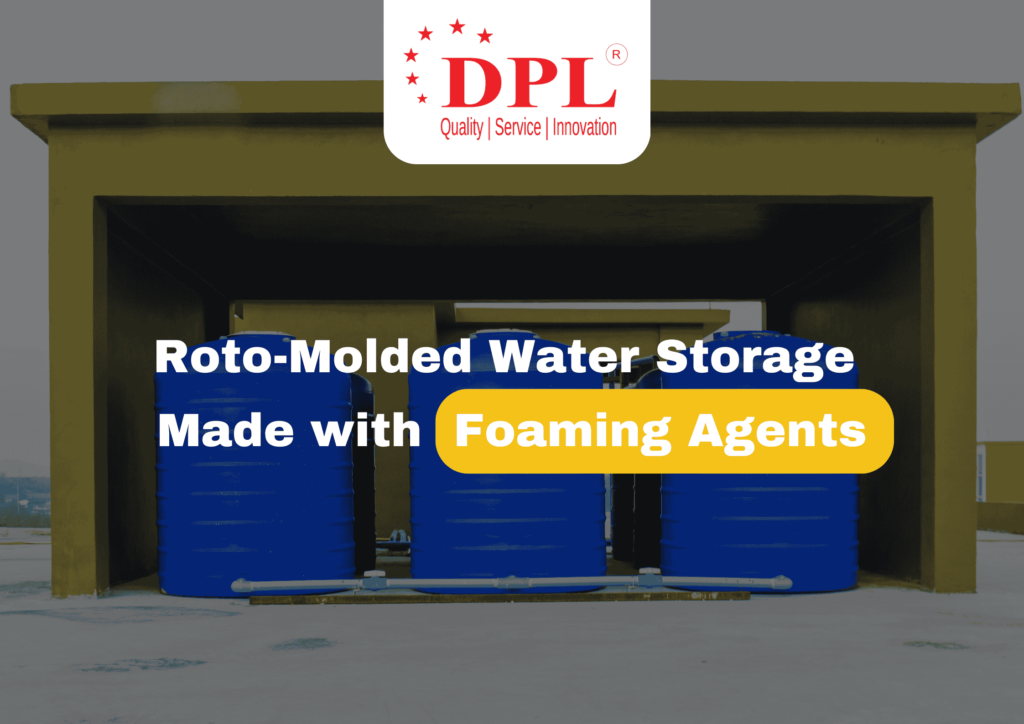
In recent years, the Indian manufacturing industry has undergone a silent revolution in the field of polymer processing. Among various sectors, rotational moulding, commonly known as roto-moulding, has emerged as a robust and cost-effective technique for producing hollow plastic products. One of the most significant developments in this area is the use of foaming agents in roto-moulded water storage units.
This innovation marks a new phase in the production of durable, lightweight, and thermally efficient storage solutions using polyethene and other polymers. With rising awareness about material efficiency and manufacturing performance, foaming agents are quickly gaining ground in India’s polymer industry.
Understanding Roto-Moulding
Roto-moulding is a versatile manufacturing process that involves placing polymer powder inside a mould, which is then heated and rotated bi-axially. As the mould rotates, the polymer melts and coats the inner surface, eventually solidifying into a seamless, hollow product. This method is particularly advantageous in terms of tool cost, flexibility of design, and thickness control.
In India, where cost sensitivity meets the demand for high durability, roto-moulding offers a unique advantage over injection or blow moulding. Its utility in manufacturing large, seamless plastic components makes it a preferred choice for numerous industries. The integration of foaming agents into this process is now seen as a leap forward in polymer engineering.
What Are Foaming Agents?
Foaming agents, also known as chemical blowing agents, are additives that decompose at processing temperatures to release gases like nitrogen or carbon dioxide. These gases create a cellular or foamed structure within the polymer matrix. In roto-moulding, they are introduced into the polyethylene powder or resin mix before processing begins. Upon heating, the agent activates and disperses gas, which becomes trapped in the forming plastic, reducing its density and adding thermal insulation properties.
These agents are typically categorised as:
● Exothermic agents, which release heat during decomposition, such as azodicarbonamide (ADC)
● Endothermic agents, which absorb heat, like sodium bicarbonate-citric acid blends
In the Indian market, a growing number of manufacturers are experimenting with different grades and types of foaming agents to suit varying moulding cycles and polymer grades.
The Material Science Behind It
The use of foaming agents in roto-moulded polyethene significantly alters the internal microstructure of the final product. By introducing microscopic air cells into the polymer matrix, the material becomes lighter without compromising its mechanical strength. This change in structure also leads to improved thermal insulation, lower material usage, and cost savings.
In traditional roto-moulded parts, the polymer forms a solid wall that is dense and uniform. When foaming agents are added, the internal structure turns into a cellular matrix. This dual-layered configuration where the outer surface remains solid and smooth while the inner core is foamed enhances rigidity and reduces thermal conductivity.
For manufacturers, this translates into less raw material per unit, reduced cycle times, and increased production efficiency. For Indian manufacturers who often face logistical challenges and volatile raw material pricing, this development brings considerable operational relief.
Manufacturing Benefits: A Closer Look
1. Material Savings: Foaming agents help in reducing the amount of polymer needed to achieve a given product volume. For roto-moulded water storage units, this means lower per-unit material consumption without compromising the structure.
2. Improved Cycle Efficiency: Since the foamed layer cools faster due to the trapped air cells, demoulding times are shorter. This results in quicker production
cycles, an important factor in high-volume Indian manufacturing setups.
3. Weight Reduction: Foamed products are significantly lighter than their solid counterparts. Reduced weight aids in storage, handling, and transportation critical concerns for pan-India distribution networks.
4. Energy Conservation: With lower thermal mass and improved insulation properties, the foamed products contribute to energy savings during production and throughout their lifecycle.
5. Reduced Tooling Costs: Because foamed parts exert less pressure on the mould walls, the wear and tear on moulds is significantly reduced. This leads to longer tool life and fewer replacements.
Quality Control and Testing Parameters
Incorporating foaming agents into the roto-moulding process demands precise control over processing parameters. Manufacturers must ensure the uniform dispersion of the foaming agent, correct activation temperature, and proper venting to avoid surface defects or voids.
Some key quality parameters monitored during production include:
● Density control
● Cell size and distribution
● Wall thickness uniformity
● Mechanical strength testing
● Thermal insulation performance
Indian manufacturers are increasingly adopting in-line quality testing tools and automated batching systems to maintain consistency in these parameters.
Sustainability and Market Impact
The integration of foaming agents aligns well with India’s increasing push toward sustainability and waste reduction. Since foamed roto-moulded products use less polymer, they naturally have a lower carbon footprint. Moreover, many modern foaming agents used in India today are non-toxic, halogen-free, and compliant with RoHS standards.
By producing more units with the same amount of raw material, Indian manufacturers can optimize operations and reduce their environmental impact. For an industry constantly striving to balance cost, quality, and compliance, foamed roto-moulding offers a rare win-win.
Indian firms like DPL Group of Companies are already leading this shift by investing in R&D, material innovation, and process optimisation.
Conclusion
The use of foaming agents in roto-moulded water storage production is not just a minor tweak, it is a paradigm shift. It addresses key concerns of the Indian manufacturing sector, such as cost efficiency, durability, energy savings, and process speed. With growing awareness and adoption, foamed roto-moulding is poised to become the new benchmark in polymer-based manufacturing.
For companies looking to stay ahead in a competitive, quality-driven market, now is the time to explore and adopt this high-performance technology. As India’s demand for durable, efficient, and environmentally responsible manufacturing grows, foaming agents in roto-moulding will no doubt lead the charge.
